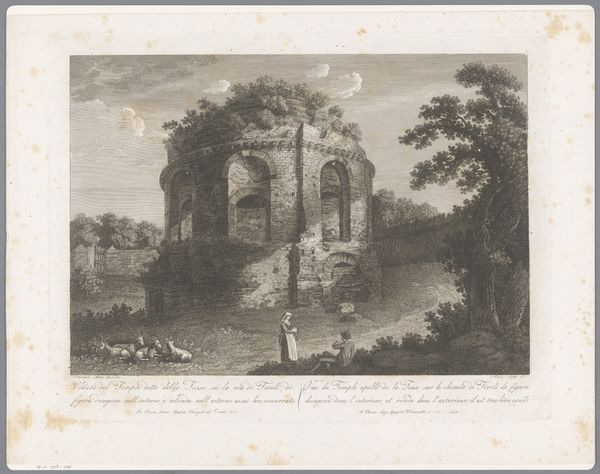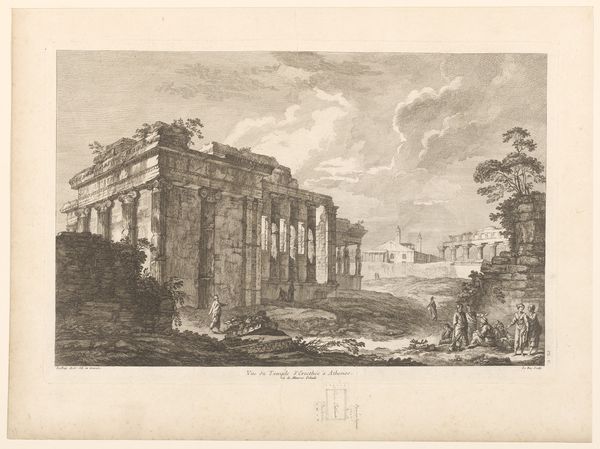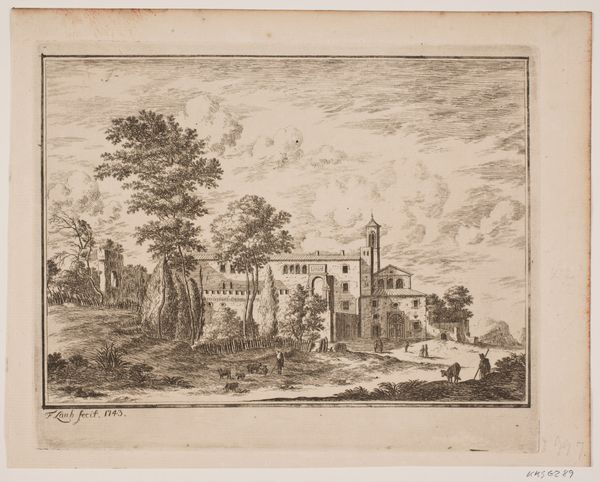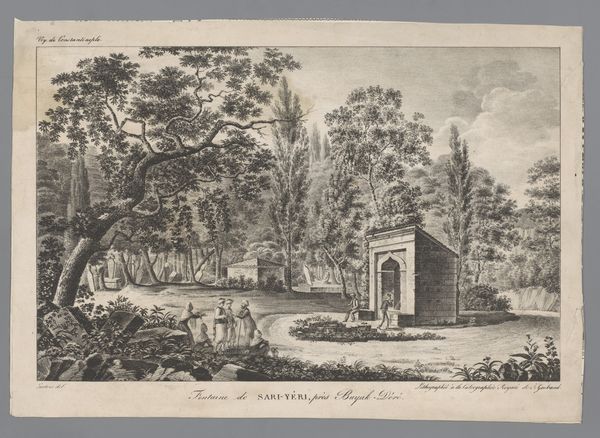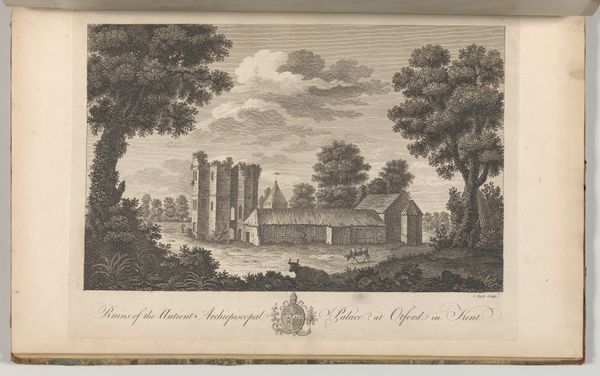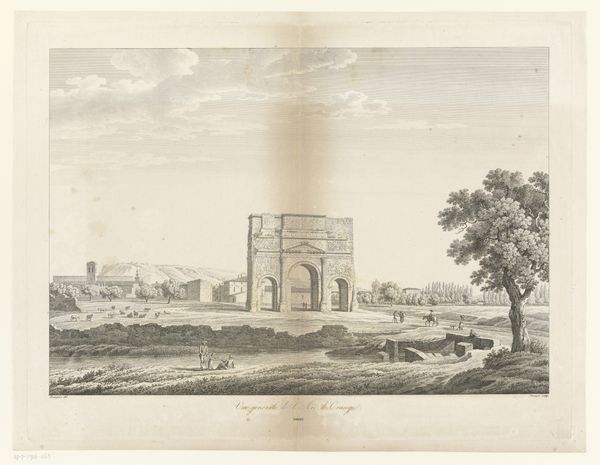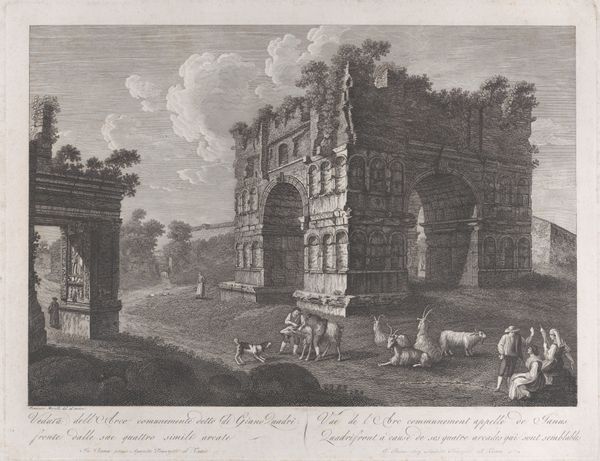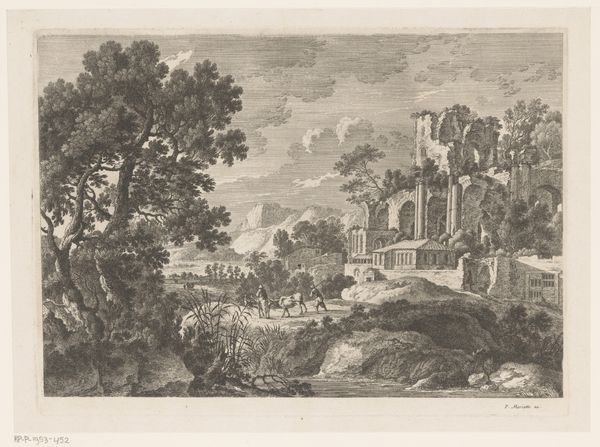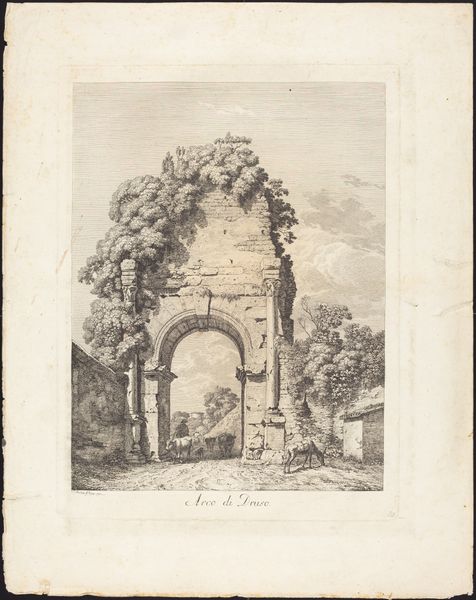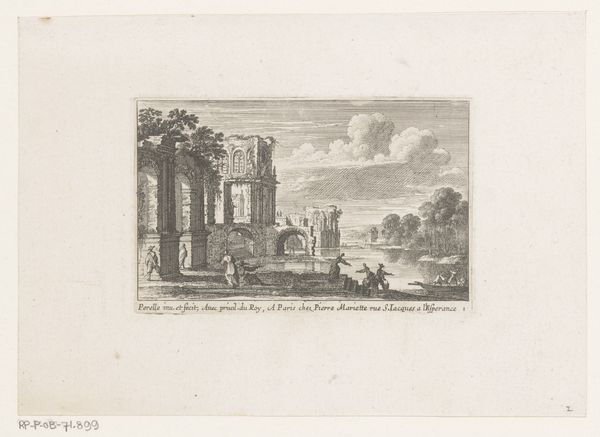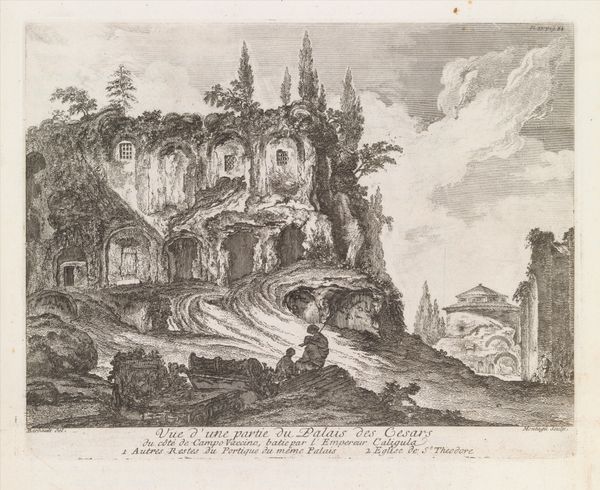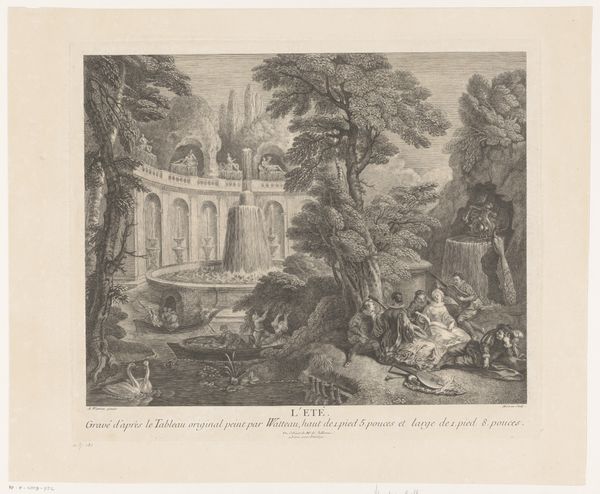
Design for a Triumphal Arch for the Gardens at Chateau d'Enghien, Belgium 1782
0:00
0:00
drawing, print, watercolor, architecture
#
drawing
#
neoclacissism
# print
#
landscape
#
watercolor
#
cityscape
#
architecture
Dimensions: Sight: 12 × 14 in. (30.5 × 35.6 cm)
Copyright: Public Domain
Curator: The initial feeling I get from this drawing is one of serene decay, a romantic vision of history gently touched by time. Editor: Indeed. What we’re looking at is "Design for a Triumphal Arch for the Gardens at Chateau d'Enghien, Belgium" created around 1782 by Charles de Wailly. It’s rendered in watercolor, ink, and graphite – various materials carefully layered to give a sense of depth. This was no mere sketch; it was a proposition. Curator: Right, you see the layered strokes creating a material sensibility. It is interesting how the detailed rendering creates almost a tactile presence, despite being only a proposed design. Editor: Precisely. The politics of imagery are potent here, since the design suggests so much. Imagine, this arch intended as a centerpiece in the gardens of the Chateau d'Enghien. These architectural fantasies projected power and taste, embodying a Neoclassical ideal amid a landscape crafted for aristocratic leisure. Curator: What strikes me is the visible labor involved in creating not only the architectural design, but also in rendering it on paper. Consider the workforce that the Château d’Enghien and garden landscapes required and its reliance on exploitative labor systems to manufacture luxury items for consumption. It speaks to a system of high art propped up by less recognized or acknowledged makers. Editor: Yes, and what does the public role of this proposed art offer, in a moment of increasing social and political change? How might de Wailly, who held significant influence in shaping public spaces, also contributed to the discourse on architecture through this drawing, even if it wasn't actually built? Curator: And beyond its intent, the image prompts considerations about resource extraction – ink from plants, graphite mined, the manufacture of watercolors from ground pigments. How are those materials related to colonialism and ecological degradation? Editor: You raise important questions about material origin and social justice! Looking at how Neoclassical aspirations often sanitized and idealized, how does de Wailly invite, and yet, simultaneously erase traces of his own world to build a future for an empire? Curator: Well, looking at it from a distance has me pondering the ethics involved. Perhaps looking into its materials also sheds light on historical contexts to encourage us to think deeper on its materiality. Editor: Yes, indeed. Viewing this image can be so generative in getting us to reflect on the world beyond just this design!
Comments
No comments
Be the first to comment and join the conversation on the ultimate creative platform.
